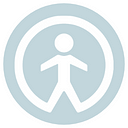Finding users for AR/VR research and testing
Seven things to keep an eye on when recruiting and screening users for emerging technology testing.
As expected, the rise in development of augmented reality (AR) and virtual reality (VR) technology outside the gaming industry has caused an increase in user research and testing of this technology. If you are looking to run your own research/testing sessions for VR or AR tech, then here are some things to consider to ensure you get the best possible results.
👉 Don’t get caught up in whether participants are current users of AR or VR. These technologies are still emerging and many potential future users are yet to adopt this technology. Instead, focus on whether the participant is a likely user and build your target user group based on other behaviours.
👉 Make sure the people leading the sessions are familiar and comfortable with the technology they are recruiting for and testing. Do your user researchers know the technology and are they best placed to advise on how to screen participants? If not, is it possible to include a developer or designer in the recruitment process to make sure you are testing with relevant participants?
👉 As more companies adopt virtual and augmented reality, will participants always know the difference when being asked what they are familiar with? Many people have not heard the term AR and just assume all this technology belongs to the virtual reality world. We will need to adapt our language to cut through the technical linguistic jungle and make sure participants have relevant experience when being screened to participate.
👉 As this blog highlights, VR is a first person experience and people are “seeking out experiences, not technologies”. Our past experience shows that accurately recruiting people who have had a certain experience has some constraints, as an ‘experience’ is open to interpretation.
👉 This is a new area of technology, so there are benefits in having help when building the right screener and appropriately identifying suitable participants. If you don’t have the budget to work with a professional recruiter, who will write the screener for you, take a look at this blog with some tips for writing a recruitment screener. A professional user recruiter should be able to help you identify non-users if you are struggling to target and recruit from the small pool of existing users of certain products and services.
👉 When recruiting people to test something that has a physical experience as well as a non-physical experience, it is important to be clear with users about what you are actually testing. For example, is it their experience of actually choosing and setting up the physical device (e.g. Oculus Rift) or are you testing the in-game experience? From our 25 years of experience, we can guarantee it is easy for users to make an assumption about the purpose of the research based on their limited experience of UX.
👉 This area is continually innovating and the ground is constantly shifting. If setting up ongoing research, the recruitment and screening process may need to adapt over time to react to new products, services, and experiences. The recruitment process is an excellent opportunity to gather information on changing attitudes to technology to help prepare for usability testing sessions and user research.
We want to keep in touch. Join our mailing list to receive our newsletter and/or our monthly round-up.
